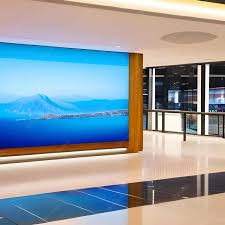Introduction
Throughout history, architecture has not only been about utility but also an expression of art and culture. One of the lesser-known yet fascinating elements in ancient architecture is the ‘Stone-Halo.’ This article explores the role and significance of Stone-Halos in ancient structures and designs, shedding light on how they contributed to the architectural marvels of their time.
Understanding Stone-Halo in Ancient Architecture
Defining the Stone-Halo
A Mads light refers to a specific architectural feature, often seen in ancient buildings, characterized by a circular or semi-circular design element, typically crafted in stone. It was used to create a visual effect of sanctity or significance around a particular feature or part of a structure.
Symbolism and Cultural Significance
In many ancient cultures, Stone-Halos were symbolic, representing divine protection or aura. They were often incorporated around deities, important figures, or significant architectural elements to denote reverence and importance.
The Role of Stone-Halos in Various Civilizations
Ancient Greece and Rome
In Greco-Roman architecture, Stone-Halos were often found in temples and important public buildings. They were used to accentuate statues of gods and goddesses, emphasizing their divine nature.
Asian Architectural Styles
In Asian architecture, particularly in countries like India and China, Stone-Halos were common in temples and palaces. They were intricately carved and detailed, often depicting scenes from mythology or nature, adding an element of storytelling to the structures.
Medieval European Architecture
In medieval European architecture, Stone-Halos were prominent in churches and cathedrals. They were typically used in the depiction of saints and figures from Christian theology, often seen in the form of haloed heads in sculptures and reliefs.
Architectural Techniques and Innovations
Stone Carving Techniques
The creation of Stone-Halos required skilled craftsmanship and precise stone carving techniques. The intricacy of the work often reflected the technological capabilities and artistic sensibilities of the time.
Integration with Architectural Elements
Stone-Halos were not standalone features but were integrated into the broader architectural design. They were often combined with other elements like columns, pediments, and friezes, contributing to the overall aesthetic and thematic narrative of the structure.
The Impact and Legacy
Influencing Modern Architecture
The concept of the Stone-Halo has influenced modern architecture, where similar motifs are used for their symbolic value and visual appeal. They serve as a reminder of the rich architectural heritage of our past.
Preservation and Study
Many ancient structures with Stone-Halos are preserved as cultural heritage sites. Their study offers valuable insights into the architectural practices, cultural values, and artistic expressions of ancient civilizations.
Conclusion
“Architectural Marvels: The Role of Stone-Halo in Ancient Structures and Designs” reveals a fascinating aspect of historical architecture. These features not only added beauty and grandeur to ancient structures but also served as a testament to the artistic skills and cultural expressions of past civilizations. The legacy of Stone-Halos continues to inspire and influence architectural designs, bridging the past and present in the realm of artistic expression.
Top of Form




